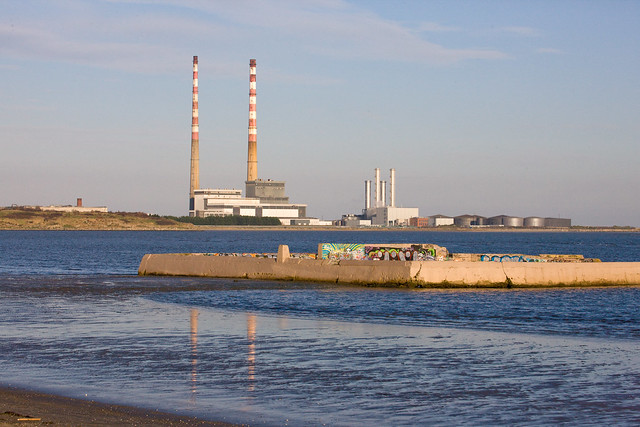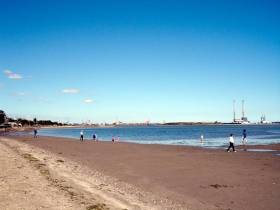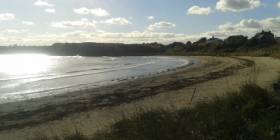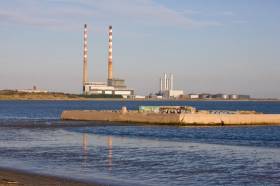Displaying items by tag: Bathing Water
Most of Ireland’s tested bathing water locations meet or exceed minimum standards, the Environmental Protection Agency (EPA) says.
The EPA Bathing Water Quality in Ireland report for 2022 shows that water quality at the majority of Ireland’s bathing waters “meets or exceeds the appropriate standards”.
It says 79% of bathing sites have “excellent” water quality, while 97% meet the minimum standard.
In particular, the EPA highlights two beaches that have improved from “poor” to “excellent” quality over recent years - Portrane, the Brook Beach in Dublin, and Trá na bhForbacha, Na Forbacha in Galway.
“This shows that with investment and a strong focus by the local authorities in finding and fixing the issues, water quality will improve,” it says.
The EPA says the number of beaches with poor bathing water quality increased to three, compared with two in 2021, and these three will have a swimming restriction for the 2023 season.
They are Balbriggan (Front Strand Beach), Lady’s Bay, Buncrana and Trá na mBan, An Spidéal; due to different issues, including wastewater discharges, run-off from urban and agricultural lands as well as dog and other animal fouling, it says.
Dr Eimear Cotter, director of the EPA’s Office of Evidence and Assessment, welcomed the ongoing improvement.
Currently, open water swimmers are pushing for year-round testing rather than the designated season from June 1st to September 15th when local authorities carry out testing.
Cotter acknowledged that year-round swimming “continues to be popular”.
She said the EPA “looks forward to the outcome of the work, led by the Department of Housing, Local Government and Heritage, which is investigating how to protect bathers' health year-round”.
“Unfortunately, there were no new bathing waters identified in 2022, she added.
“The EPA urges local authorities to designate more official bathing sites to protect swimmers’ health, which includes designating the large number of beaches and popular swimming spots that they monitor but which haven’t been formally identified as bathing waters,” she said.
Throughout this summer, water quality information and details of any incidents affecting bathing waters will be displayed on the www.beaches.ie website.
The Bathing Water Quality in Ireland 2022 report, infographic and a map of the quality of Ireland’s Bathing water sites in 2022 are available on www.epa.ie
#CoastalNotes - Seven beaches in Dublin and Galway have failed to meet the EU’s minimum standards for bathing water quality.
That’s according to the latest Bathing Water Quality in Ireland report from the Environmental Protection Agency (EPA), which identifies Sandymount and Merrion Strands, Loughshinny, Portrane and Rush South in Co Dublin, as well as Ballyloughane in Galway city and Clifden in the west of the county, as problem areas.
Three of the Dublin beaches are repeat offenders, with Merrion and Loughshinny marked as ‘poor’ in the previous two reports, while Portrane was listed among 2016’s worst bathing spots.
Galway fares a little better in 2017’s report, with Trá na bhForbacha upgraded to ‘vulnerable’ — though it, along with Clifden and Ballyloughane, remains at the mercy of pollution from runoff, septic discharges and the like.
Pollution events were also up in 2017, with 163 incident notices issues by local authorities — almost double the total recorded the previous year. Twelve of these notices resulted in bathing restrictions at Merrion and Sandymount Strands alone.
On a more positive note, 93% or 132 of the 142 bathing areas surveyed for the 2017 report meet the EU minimum for swimming water quality.
Nationally, bathing water standards are on par with last year’s report, which found almost three-quarters of Irish swimming spots met the EU’s strict bar for ‘excellent’ water quality.
The full EPA report is available to read or download HERE.
#CoastalNotes - Three beaches in Dublin and three in Galway have failed to meet the minimum standards for bathing water quality, according to the Environmental Protection Agency (EPA).
The Irish Times covers the latest EPA Report on Bathing Water Quality, which listed repeat offenders Ballyloughane in Co Galway and Dublin’s Merrion Strand and Loughshinny, along with Portrane in North Co Dublin and Galway’s Clifden and Trá na bhForbacha as beaches especially vulnerable to pollution.
Youghal’s front strand, Duncannon in Wexford and the south beach at Rush in Co Dublin, which were listed as ‘poor’ in last year’s report, showed enough improvement in their bathing water quality to be classified as ‘sufficient’.
Overall, almost three-quarters of Ireland’s bathing spots — both coastal and inland — were classified as having ‘excellent’ water quality.
The Irish Times has more on the story, while the full EPA report on Ireland’s bathing water quality can be found HERE.
#BathingQuality - Six Irish coastal beaches – half of them in the Greater Dublin Area – fall short of the Environmental Protection Agency's (EPA) minimum required standard for water quality.
Rush's south beach and Loughshinny in north Co Dublin joined Merrion Strand in south Dublin, Youghal's front strand in Co Cork, Duncannon in Wexford and Ballyloughane in Co Galway in the list of bathing areas classed as being of 'Poor' quality in the EPA's Bathing Water Quality in Ireland report for 2015.
The EPA explains that the 'Poor' class, which averages data collected between 2012 and 2015, reflects bathing areas that "may be subject to more frequent, or more significant, pollution events" often impacted by "nearby sewage discharges, most commonly as a result of heavy rainfall".
All six beaches on the current 'Poor' list showed improvement in the last year, recording a number of 'Excellent' scores in 2015, but pollution concerns remain.
And in the case of Merrion Strand, bird droppings from seagulls congregating in the area are a serious issue, as they carry as much as 10 times the bacteria of human waste.
Overall, bathing quality in Irish waters remains "very high", according to the report, with just over 93% of sites meeting the minimum EU standards.
Three-quarters of these – 101 of the 137 areas monitored - were classed as being 'Excellent', with the counties of Clare, Kerry, Leitrim and Louth standing apart with unblemished records for their bathing quality.
The complete EPA bathing water quality report is available to read or download HERE.
































































